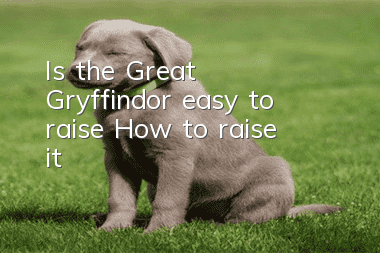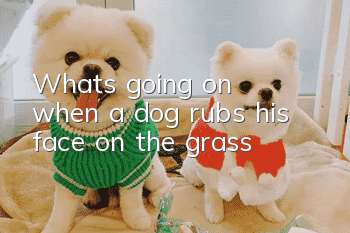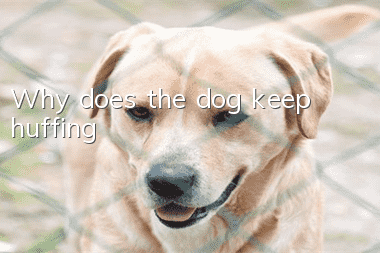Is the Great Gryffindor easy to raise? How to raise it?

The Great Gryffindor, also known as the Vendée Gryffindor. It is a very ancient hunting dog that originated in the Vendée region of France in the 15th century. Their ancestors include the Grissouvian and Black Italiano dogs as well as the St. Hubert Hounds. The appearance of the Great Gryffindor is very strong and lean, and it looks very healthy and powerful. And their personalities are also very optimistic and cheerful. The smart Great Gryffindors are very smart, and they hunt very fast. In ancient hunting activities, it would play a great role and make an indispensable contribution. The current number of Great Gryffindors is not very large. Although there are many people who like them, there are very few people who actually own them.
1. Appearance characteristics of the Great Gryffindor
The shoulder height of the male Great Gryffindor is about 62 cm to 68 cm, and the shoulder height of the female Great Gryffindor is about 60 cm to 65 cm, which is relatively shorter. The weight of the male is about thirty kilograms to thirty-five kilograms. They look very well-proportioned and strong overall. The eyes are dark, large and bright, and the conjunctiva is not very obvious and can be easily seen. Their skulls are round when viewed from the front of their bodies, but not very wide. The muzzle is strong, straight, slightly convex, and as long as the skull. The teeth have a scissors bite and the frontal incisors are square. The neck is elegant and free of dewlap, and the back is strong and slightly carried forward. The waist is well muscled and the chest is deep but not wide, running parallel to the elbows. The coat is of medium length, dense and hard, and is not exposed on the inner thighs and abdomen, except for the eyes.
2. Characteristics of the Great Gryffindor
The Great Gryffindor comes from ancient times and has a very long history. Their original use was as hounds for hunting, so they have always been very brave in character. This good character quality has been well preserved. Moreover, they have a cheerful and optimistic personality, are not irritable, and are very patient. When they encounter difficult actions that cannot be completed, they often do not appear particularly irritable, but are very difficult to deal with calmly. This kind of personality makes them very useful in the training process, and the training effect is always twice the result with half the effort. In addition, through long-term contact and running-in with humans, the temperament of the Great Griffon has become more and more friendly. They can communicate well with humans, and can also accept other animals and live in peace with them. Such a big Gryffindor would be a blessing to anyone’s home.
3. How to raise the Great Gryffindor
1. Feeding
Feeding the Great Griffon Dog must be regular, regular and quantitative, and nutritionally balanced. The feeding time should be fixed every day, so as to develop their eating habits and make other daily activities orderly. Don’t feed too much at one time, only about seven to eight percent full. Eating too much will increase the burden on their intestines and is not conducive to their healthy growth. In terms of nutrition, attention should be paid to supplementing calcium and eggsProtein, so meat must account for the main part, vitamins, carbohydrates, etc. are also essential, so necessary vegetables and rice must also be provided. Food bowls and sinks must be cleaned before each feeding to maintain hygiene and prevent the occurrence of diseases. Do not feed highly irritating foods such as garlic, nor foods that contain too much salt. These foods may cause intestinal disease or even poisoning and death.
2. Maintenance
The hair of the Great Gryffindor is not very long, so you don’t need to comb it every day, because their hair is of medium length and not easy to tangle. Just comb it two or three times a week. However, because their hair is very thick and easy to get dirty, they must pay attention to cleanliness and hygiene. Combing their hair can remove some of the dirt on their bodies, but they must also bathe regularly. In summer, they should wash them once every half a month or so. But be careful not to let them catch a cold. Whether it is summer or winter, you must keep warm and blow dry immediately after bathing. Daily walks and routine training will enrich their lives and maintain their skills.
Guess you like it
Laizhou Red | Neapolitan Mastiff | German Black Shellfish | Snow Mastiff | Czech Wolfdog | Kunming Dog | British Setter | Hericium Terrier
Basset Griffin Vendeen | Havanese Dog Rottweiler | Norwegian Terrier | Czech Terrier | Tibetan Terrier | Swedish Corgi | Toy Fox Terrier
Sussex Spaniel | Bedlington Terrier | Dogs with loss of appetite | Canary Dog | Siberian Husky | Komondor | Brazilian Mastiff
Karelian Bear Dog | Bergamasca | New Guinea Singing Dog | Skye Terrier | Thai Ridgeback | Brussels Griffon
The Great Gryffindor, also known as the Vendée Gryffindor. It is a very ancient hunting dog that originated in the Vendée region of France in the 15th century. Their ancestors include the Grissouvian and Black Italiano dogs as well as the St. Hubert Hounds. The appearance of the Great Gryffindor is very strong and lean, and it looks very healthy and powerful. And their personalities are also very optimistic and cheerful. The smart Great Gryffindors are very smart, and they hunt very fast. In ancient hunting activities, it would play a great role and make an indispensable contribution. The current number of Great Gryffindors is not very large. Although there are many people who like them, there are very few people who actually own them.
1 Appearance characteristics of the Great Gryffindor
The shoulder height of the male Great Gryffindor is about 62 cm to 68 cm, and the shoulder height of the female Great Gryffindor is about 60 cm to 65 cm, which is relatively shorter. The weight of the male is about thirty kilograms to thirty-five kilograms. Overall, they look very well-proportioned and strong.. The eyes are dark, large and bright, and the conjunctiva is not very obvious and can be easily seen. Their skulls are round when viewed from the front of their bodies, but not very wide. The muzzle is strong, straight, slightly convex, and as long as the skull. The teeth have a scissors bite and the frontal incisors are square. The neck is elegant and free of dewlap, and the back is strong and slightly carried forward. The waist is well muscled and the chest is deep but not wide, running parallel to the elbows. The coat is of medium length, dense and hard, and is not exposed on the inner thighs and abdomen, except for the eyes.
Characteristics of the 2 Great Gryffindors
The Great Gryffindor comes from ancient times and has a very long history. Their original use was as hounds for hunting, so they have always been very brave in character. This good character quality has been well preserved. Moreover, they have a cheerful and optimistic personality, are not irritable, and are very patient. When they encounter difficult actions that cannot be completed, they often do not appear particularly irritable, but are very difficult to deal with calmly. This kind of personality makes them very useful in the training process, and the training effect is always twice the result with half the effort. In addition, through long-term contact and running-in with humans, the temperament of the Great Griffon has become more and more friendly. They can communicate well with humans, and can also accept other animals and live in peace with them. Such a big Gryffindor would be a blessing to anyone’s home.
3 ways to raise the Gryffindor
1. Feeding Feeding the Great Griffon must be regular, regular and quantitative, and nutritionally balanced. The feeding time should be fixed every day, so as to develop their eating habits and make other daily activities orderly. Don’t feed too much at one time, only about seven to eight percent full. Eating too much will increase the burden on their intestines and is not conducive to their healthy growth. In terms of nutrition, attention should be paid to supplementing calcium and protein, so meat should account for the majority, vitamins, carbohydrates, etc. are also essential, so necessary vegetables and rice should also be provided. Food bowls and sinks must be cleaned before each feeding to maintain hygiene and prevent the occurrence of diseases. Do not feed highly irritating foods such as garlic, nor foods that contain too much salt. These foods may cause intestinal disease or even poisoning and death.
2. Maintenance The hair of the Great Gryffindor is not very long, so you don’t need to comb it every day, because their hair is of medium length and not easily tangled. Just comb it two or three times a week. However, because their hair is very thick and easy to get dirty, they must pay attention to cleanliness and hygiene. Combing their hair can remove some of the dirt on their bodies, but they must also bathe regularly. In summer, they should wash them once every half a month or so. But be careful not to let them catch a cold. Whether it’s summer or winter, keep warmDo, blow dry immediately after bathing. Daily walks and routine training will enrich their lives and maintain their skills.
Guess you like it
Laizhou Red | Neapolitan Mastiff | German Black Shellfish | Snow Mastiff | Czech Wolfdog | Kunming Dog | British Setter | Hericium Terrier
Basset Griffon Vendeen | Havanese Rottweiler | Norwegian Terrier | Czech Terrier | Tibetan Terrier | Swedish Corgi | Toy Fox Terrier
Sussex Spaniel | Bedlington Terrier | Dogs with poor appetite | Canary | Siberian Husky | Komondor | Brazilian Mastiff
Karelian Bear Dog | Bergamaska | New Guinea Singing Dog | Skye Terrier | Thai Ridgeback | Brussels Griffon
- Treatment methods for dog vomiting and diarrhea
- Will dogs rupture their intestines if they eat dried duck neck?
- What's wrong with dogs with dry noses?
- Five ways to get rid of your dog’s tear stains
- Dogs giving birth at home, some things owners need to help with
- How long does it take for dogs to be dewormed before all the worms are killed?
- Signs of depression in dogs, come and see if your dog has it
- What should you do when faced with "fungi + mites + inflammation"?
- Select competition-grade Husky puppies based on bone proportions
- Illustration of the correct ways and precautions to greet your dog



